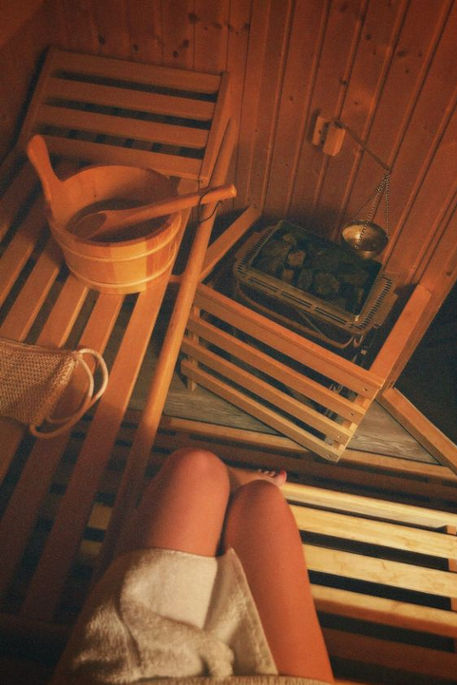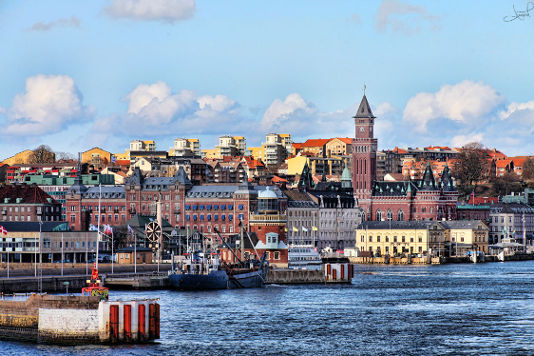Sauna is a health-enhancing therapy that has been used since ancient times. We already know a lot about the effectiveness of our health as well as beauty. However, do you know about the sauna culture and its development? Do you know the initial meaning of sauna bathing? If not, let’s figure it out in this article with The Sunday Snug!
Maybe you get interested in..
Cafécore 101: How to Create A Cozy Coffee Station At Home
Clear Your Mind: How to Embrace an Alcohol-Free Lifestyle
From ‘Brat Summer’ to Demure Aesthetics: Now Mindful Vibes Only
The beginning of sauna culture
The first sauna originated from Finland, and it was supposed to exist 10,000 years ago, after the Ice Age. Some archaeological evidence shows that early forms of saunas existed since prehistoric times in Northern Europe, where harsh weather conditions and cold winters forced people to search for ways to keep warm and maintain personal hygiene. In the initial time, the sauna played a vital role to Finnish daily life in many ways: physically, socially and spiritually.
The early form of the sauna is savusauna, which is called “smoke sauna” in English. It is built from wood, especially larch or pine since their wood has good heat resistance. In terms of the sauna’s display, it is a type of room without a chimney, where the fire burns the stones in a closed room until the stones are hot enough. Then the fire goes out and the users can enter the room to enjoy the heat from the stones and the smoke that has escaped. The rooms are usually small to keep maximum heat. People will sit or lie on wooden benches at different levels depending on their ability to resist heat.
The rudimentary meanings of savusauna
In the initial stages, the savusauna was used not only for keeping warm but also cleaning and healing. The harsh weather conditions in Finland with long winters made saunas an effective way to keep the body warm. Besides, at that time, clean water was not abundant. Therefore, people used saunas to wash and maintain hygiene by eliminating toxins through sweat. Furthermore, people believed that saunas could cure diseases and bring health because the heat from saunas could heal tired muscles. reduce pain and improve overall health. Also, saunas brought sacred spiritual meanings to cleanse the soul. Finnish believed sauna rooms were like a “meditation room” to purify both body and spirit. Significantly, some important events were taken place in saunas, such as giving birth or medical treatment.
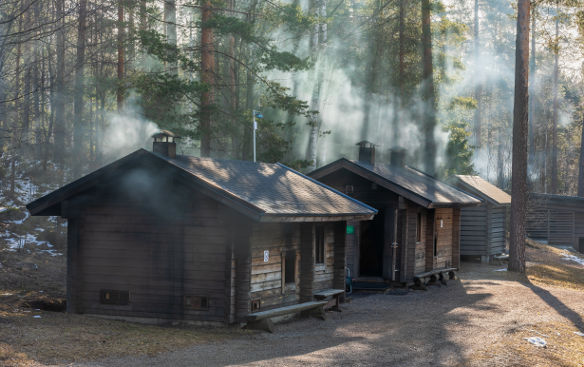
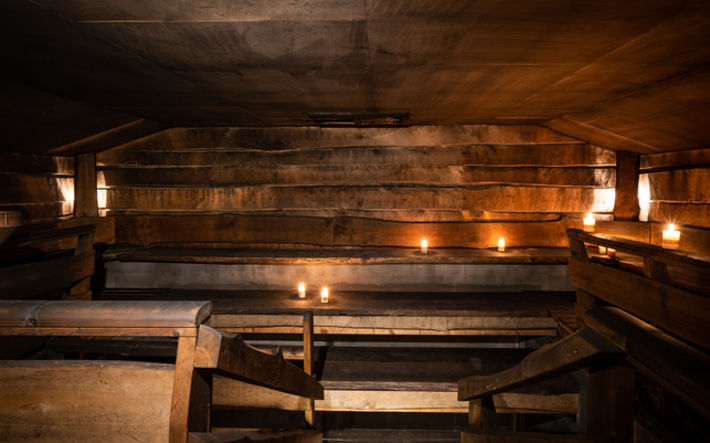
Sauna in Roman culture
Roman saunas, or more precisely steam baths (Thermae), appeared in the public bathhouses of the Roman Republic around the 2nd century BC. However, this form of sauna reached the peak of development during the Roman Empire, from the 1st century BC to the 4th century AD.
The early Roman form of sauna was the Caldarium, which is a part of the Thermae system (public bathhouse). Both saunas and Thermae were usually built from stone, brick, and mortar with the Roman technique of building raised floors (hypocaust) – an underfloor heating system. Unlike the Finnish ancient sauna, the Roman one had a more complicated display with three main bath chambers: Caldarium – Tepidarium – Frigidarium.
- Caldarium (the hot room) is similar to sauna, where has a high temperature and low humidity.
- Tepidarium (the warm room) is the intermediate place before entering the hot room, the temperature here is milder.
- Frigidarium (the cold room) is a place for people to cool their bodies after taking a sauna or soaking in a hot water tank.
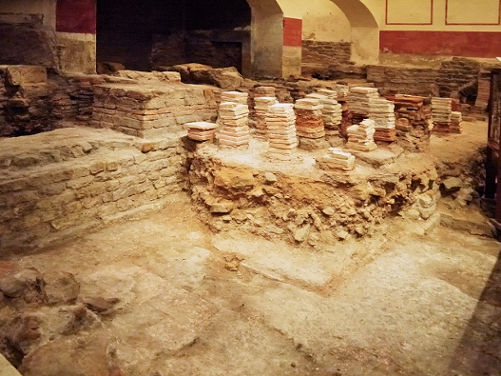
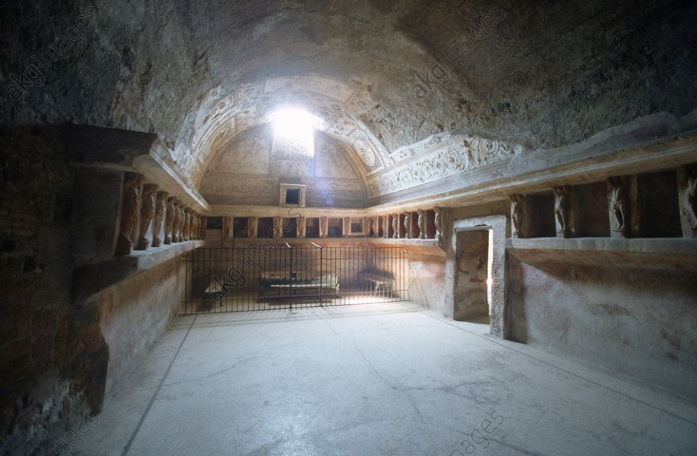
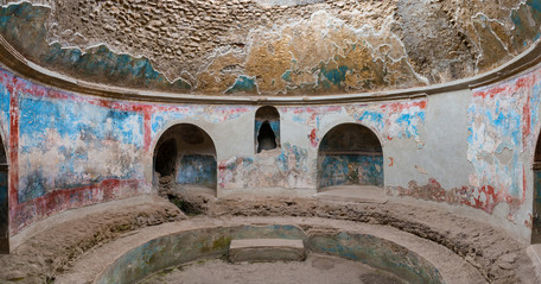
Besides, the Roman saunas were often large rooms with stone baths and underfloor heating. Although they were public bathhouses, everything was built meticulously to create a luxury feeling. In addition, they were often decorated with marble and mosaics on the floors.
The rudimentary meanings of Thermae
Analogously to other cultures, Thermae helped citizens maintain hygiene. The Romans utilized Caldarium to cleanse and eliminate toxins through the skin. Besides, the high temperature was effective in relaxing muscles, reducing stress, increasing blood circulation, and treating some mild diseases. Surprisingly, Thermae was also a meeting place. People could socialize and even discuss work, politics, and other topics in such a relaxing place. This was considered a popular form of socialization among the nobility and the people.
The incremental development of sauna culture
With the development of time, forms of saunas also gradually develop and become more diverse.
Dry sauna
Dry sauna is the first as well as the most ancient sauna in the world. The predecessor of the dry sauna was savusauna (smoke sauna), which originated in Finland. This is the traditional sauna with a high temperature is around 70ºC – 100 ºC while humidity is around 10% – 20%.
Steam sauna
Steam saunas first occurred in the Roman Empire around the 2nd century BC. The predecessor of this sauna was Caldarium, which has temperatures around 40ºC – 50 ºC while humidity is almost 100%.
Wet sauna
Wet sauna is the development of the traditional dry sauna in Finland during the 18th century. The users will pour water onto the hot stones to generate steam and increase humidity instead of using only dry steam. The temperatures are often around 45ºC – 65ºC while humidity is approximately 60% – 100%.
Infrared sauna
Infrared sauna uses rays to heat the body directly in lieu of heating the surrounding air. This form of the sauna was invented by Tadashi Ishikawa – a Japanese scientist in the 1960s. The humidity of the infrared sauna is very low, almost 0%. As for temperatures, it is around 45ºC – 60 ºC, which is lower than traditional saunas. Nonetheless, the effectiveness in heating body is more prominent.
Bio sauna
Bio sauna is a combination of dry sauna and steam sauna. The initial inspiration for this kind of sauna is to provide a gentler environment, with lower temperatures and higher humidity than traditional saunas, to serve the needs of those who want to experience a sauna without having to endure extreme heat. This form of sauna existed in the 20th century and became popular in Europe, especially in Germany. The room temperature is around 50ºC – 60 ºC while the humidity is around 30% – 50%.
In this day and age, the sauna is considered a wonderful method for health care and relaxation, which supports disease treatment and improves beauty. It can be said that the sauna no longer has a deeply religious or spiritual element as the initial stages. Instead, the modern sauna focuses more on improving physical and mental health.
The culture for everyone
Sauna bathing is an amazing therapy not only for health but also for mental health. For this reason, this culture has been widespread across continents and accepted in many different parts of the world through historical periods.
Europe
In Finland and Northern European countries such as Sweden, Norway, and Estonia have been using saunas since very early times.
Asian
In Asia, variations of saunas existed, such as Onsen in Japan and Jjimjilbang in Korea. Nonetheless, Finnish saunas have become popular in Asian countries at the end of the 20th century. In the modern time, China and South East Asian countries in the 1990s and 2000s.
America
In the 19th century, Finnish immigrants who came to Northern America, especially in Canada and the Lake Michigan shoreline area, brought sauna culture to these areas. During the mid-20th century, saunas have become a vital part of healthcare culture in America. In Southern America, saunas have majorly developed since the end of the 20th century, with the development of tourism and spa resorts.
Oceania
Saunas have been common in Australia and New Zealand in the second half of the 20th century, mainly through the development of gyms and spas. Besides, the tourism development from European countries and Northern America contributed significantly to the widespread popularity of saunas in Oceania.
Africa
Sauna culture becomes popular at the end of the 20th century in the Northern and Southern countries, especially in the resorts and luxurious hotels serving international tourists. In this day and age, saunas are gradually becoming more popular in some cities, but are still not as popular as in other continents.
A wonderful experience that you should try
Sauna bathing is one of the most wonderful experiences that I have been through. When taking the sauna once a week, I can see the improvement in my skin and blood circulation. Besides, meditating in the sauna helps me feel like my psychological burden has been lifted. And now, the sauna is indispensable in my life, especially in the harsh winter in Finland.
